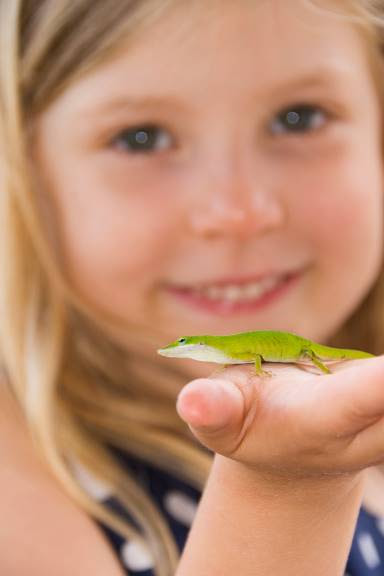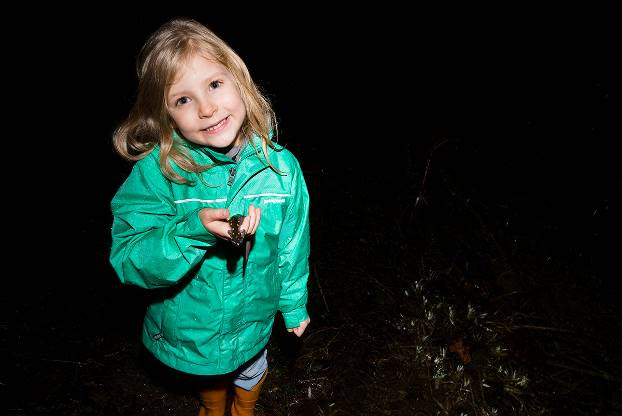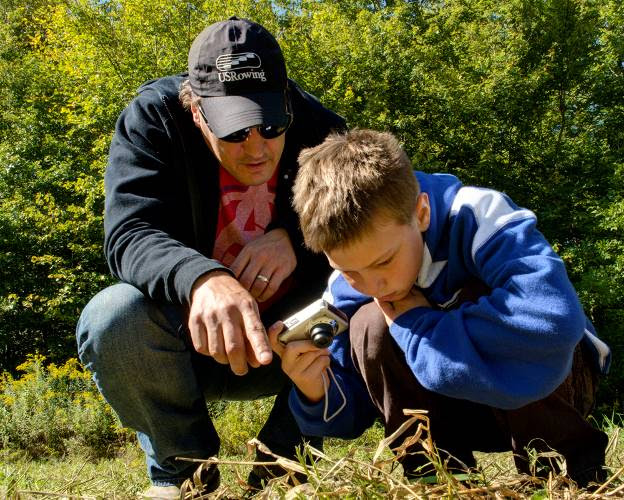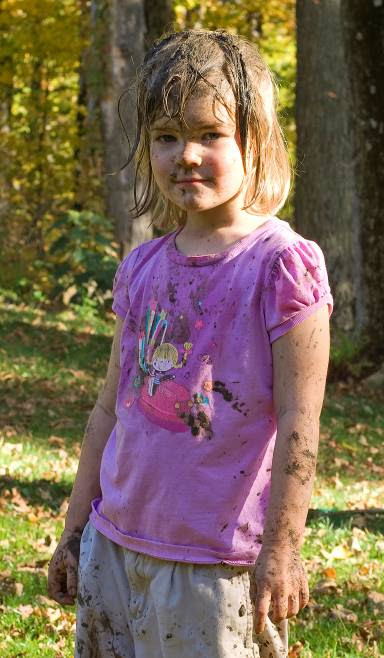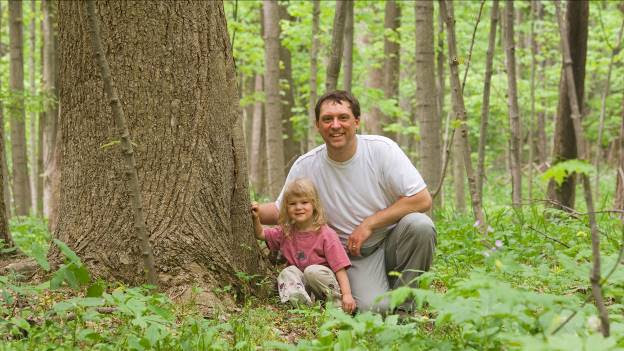Environmental writer and photographer David FitzSimmons is on a mission to connect children with nature. “Starting local is the key,” says FitzSimmons. “Learn about what’s in your own backyard.” While many kids get excited about lions and tigers and giraffes and zebras, learning about what is right around your house is the best way to get kids to feel connected with their surroundings.
FitzSimmons offers his top 10 list of great things to do with kids in nature.
1. Take a Walk
Getting out into nature can be as simple was walking in your own back yard, down the street, or in a local park. Nature is everywhere. Don’t think that you have to travel to a national park to see nature all around you. Look around you. Even if you live in the city, focus on nature components: weeds along the side of your garage, ants on the sidewalk, and cloud formations in the sky. If you do head out to a state ornational park, ask for a kid-friendly trail, one that is safe, not too long, and interesting. Look for exciting habitats, geology, and wildlife, such asponds, creeks, caves, herds of deer, or flocks of wild turkeys.
2. Birdwatching
Birds are everywhere. If you have a pair or two of binoculars, great! Spot some feathered friends and enjoy their behavior. Nobinoculars, no problem! Put up a birdfeeder right outside your window and watch songbirds come to you. Local nature centers and gardening stores typically carry birdfeeders and birdseed, and they can offer advice on types of feeders, where to put them, and when to fill them. Knowing all the birds by name is not necessary for kids to have fun, but consider getting a bird book, such as The Young Birder’s Guide to Birds of North America, to help them (and you) learn names and more natural history.
3. Visit a Nature Center
There are over well over 1,500 nature centers in the United States. Find one close to you and explore its various trails, wetlands, prairies, beaches, and more. Most nature centers have planned activities for children and families, and many give young ones opportunities to hold local animals. In addition to nature centers, visit zoos, aquariums, aviaries, botanical gardens, and arboretums.
4. Explore a Wetland
Kids love water, so take them exploring in a variety of wetlands, from ponds and creeks to marshes and swamps. In the springtime, explore vernal pools – temporary wetlands used by amphibians for egg-laying. And, if you live near the ocean, head for the beach. Wear waders in cooler weather or shorts and sandals when it?s warmer. Try catching little critters with dip nets, and study them closely with a magnifying glass.
5. Plant Something
Kids love to watch things grow. Buy a few seeds or seedlings, and you’re your kids get dirty planting. A window box is a great place to watch flowers unfurl up-close. Or find a spot in your backyard for a tree. Observe it throughout the seasons, measuring it yearly. If you have space for a garden, plant some vegetables. Let your kids choose some of the plants and plan where to plant them. Nothing beats a youngster pulling a carrot right out of the ground, washing it off, and chowing down!
6. Visit a Park
Parks are among kids favorite locations. From playground parks to county, state, and national parks, these places are synonymous with fun. Children and Nature guru Richard Louv, who coined the term ‘nature deficit disorder’, encourages free play, children experiencing nature without the structure ofactivities such as sports and schoolwork. When you visit a park, give your kids plenty of chances to explore and experience without lots of rules.
7. Go Creek Stompin’
No kid can resist the chance to stomp in a puddle. Rather than bridle such enthusiasm, find a shallow creek in the summer and go creek stompin?. Wear bathing suits and old tennis shoes or sandals. Then get ’em wet! Turn over rocks, looking for crayfish and salamanders. And have a contest to see who can skip stones the best.
8. Go Geocaching
What isn’t to like about geocaching? Finding the cache often a small container hidden under a rock, around a tree, or in other cool locations requires a GPS device and a bit of skill, but, when you find the cache, typically there are mini-treasures that kids can swap. If you read about caches ahead of time, you can find many in spectacular locations, such as promontories or hilltops, and near natural treasures, such as giant trees or monoliths.
9. Read a Book About Nature
Eventually the kidshave to go to bed. Why not settle them down by reading a few pages about nature. Plenty of picture books tell tales of animals and their adventures in nature. In the past, such works of fiction dominated the shelves of bookstores and libraries. Today, excellent nonfiction books focused on nature are proliferating. Not sure which books are best? Ask a children’s librarian or a naturalist for suggestions.
10. Take Pictures of Nature and Share Them
While out in nature, take lots of pictures. Use whatever you have, from cell phones to point-and-shoots to D-SLRs. Take pictures of the scenery and wildlife, sunrises and sunsets, habitats and geology, and try to include your children in many of the shots. But don?t stop there: when you get home, share your images. The more you post, the more you will encourage other families to get out and explore nature, too.
So, what are you waiting for? Take your kids outside to explore. And don’t forget to grab a few photos along the way. You’ll treasure how you captured their giant smiles as they got good and dirty and get well-connected with nature.
For more information, visit curious-critters.com.




